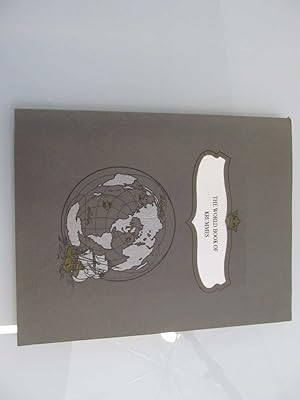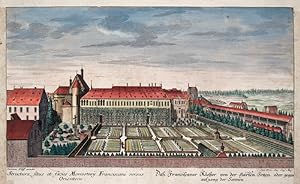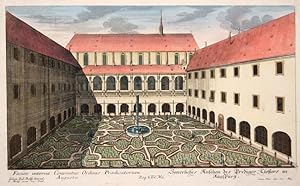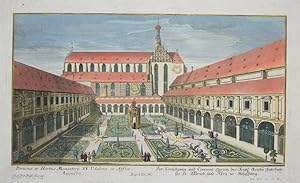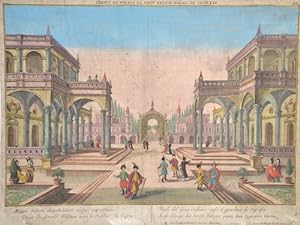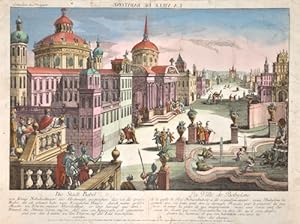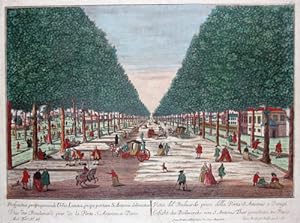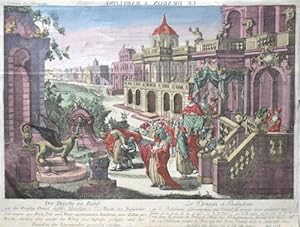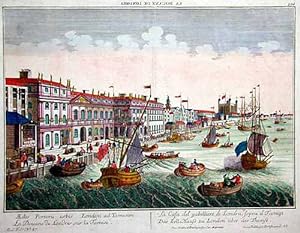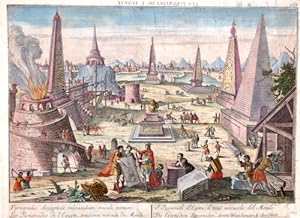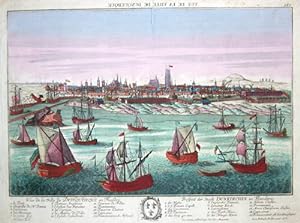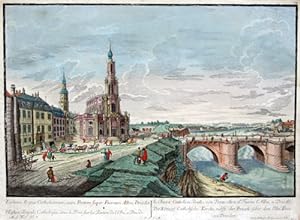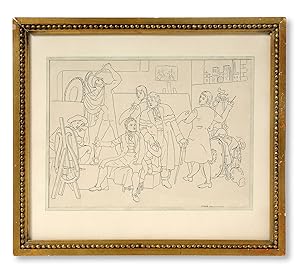s a family (28 Ergebnisse)
FeedbackSuchfilter
Produktart
- Alle Product Types
- Bücher (25)
- Magazine & Zeitschriften (Keine weiteren Ergebnisse entsprechen dieser Verfeinerung)
- Comics (Keine weiteren Ergebnisse entsprechen dieser Verfeinerung)
- Noten (Keine weiteren Ergebnisse entsprechen dieser Verfeinerung)
- Kunst, Grafik & Poster (3)
- Fotografien (Keine weiteren Ergebnisse entsprechen dieser Verfeinerung)
- Karten (Keine weiteren Ergebnisse entsprechen dieser Verfeinerung)
- Manuskripte & Papierantiquitäten (Keine weiteren Ergebnisse entsprechen dieser Verfeinerung)
Zustand
- Alle
- Neu (Keine weiteren Ergebnisse entsprechen dieser Verfeinerung)
- Antiquarisch (28)
Einband
- alle Einbände
- Hardcover (Keine weiteren Ergebnisse entsprechen dieser Verfeinerung)
- Softcover (7)
Weitere Eigenschaften
- Erstausgabe (2)
- Signiert (Keine weiteren Ergebnisse entsprechen dieser Verfeinerung)
- Schutzumschlag (Keine weiteren Ergebnisse entsprechen dieser Verfeinerung)
- Angebotsfoto (23)
Gratisversand
Verkäuferbewertung
-
Full Draw
Verlag: S & A Family (edition First Edition), 1998
ISBN 10: 0965327418 ISBN 13: 9780965327411
Anbieter: BooksRun, Philadelphia, PA, USA
Erstausgabe
Paperback. Zustand: Good. First Edition. Ship within 24hrs. Satisfaction 100% guaranteed. APO/FPO addresses supported.
Mehr Angebote von anderen Verkäufern bei ZVAB
Gebraucht ab EUR 4,56
Mehr entdecken Softcover Erstausgabe
-
A Look at Life From a Deer Stand
Verlag: S & A Family, 1996
ISBN 10: 096532740X ISBN 13: 9780965327404
Zustand: Good. Good condition. A copy that has been read but remains intact. May contain markings such as bookplates, stamps, limited notes and highlighting, or a few light stains.
-
Zustand: Good. Good condition. A copy that has been read but remains intact. May contain markings such as bookplates, stamps, limited notes and highlighting, or a few light stains.
-
The World Book of Krummes
Verlag: Published by Halbert s Family Heritage USA o. A.
Anbieter: SIGA eG, Niedersachsen - Stadthagen, Deutschland
Softcover. Zustand: Gut. 536 Seiten. R1F5-6644 Sprache: Englisch Gewicht in Gramm: 397.
-
Argentoriatum. Strasburg.
Verlag: Artist: Probst Johann Friedrich ( - 1781 ) Augsburg ; issued in: Augsburg; - Georg Balthasar Probst (1732?1801) Georg Balthasar Probst was a German artist engraver and publisher in Augsburg a major European publishing center in the 17th and 18th centuries He produced architectural views of places around the world intended as vues d?optiques which were published in various places during the last half of the 18th century including Paris Augsburg and London He was also known for his portraits Probst came from an extended family of printers whose businesses can all be traced back to the publishing firm of Jeremias Wolff (1663-1724) After Wolff's death his firm was continued as ?Wolff?s Heirs? (Haeres Jer Wolffii) by his son-in-law Johann Baltha, 1721
Anbieter: Antique Sommer& Sapunaru KG, München, Deutschland
Technic: Copper print, colorit: colored, condition: Printed on 2 sheets joined together, size (in cm): 38 x 104; - Large and very decorative view of Strassbourg with detailed description of the omportant houses and buildings.; History: In the Middle Ages Strasbourg belonged to the Holy Roman Empire. The Müllenheim family and the Zorn family were the most important patrician families of Strasbourg at that time, whose rivalry for supremacy in the imperial city (1262 to 1681) was fought out in veritable street battles. Under the reign of these families, Strasbourg developed into one of the most important economic centers of the region. The climax of the violent confrontation between the Müllenheim and Zorn families was the so-called "Geschell der Müllenheim und Zorn" in 1332. as a result of which the city nobility was overthrown, because the real winners of this fight were the guilds. They ruled in the Fünfzehnerwörth (Fifteenth Council), which dealt mainly with the affairs of the guilds, crafts, trades and commerce. Thus, Strasbourg as a free city was one of the first small republics in the Holy Roman Empire. After the invention of printing in Europe by Johannes Gutenberg, Strasbourg quickly became an important center of book production. Strasbourg's printers made a significant contribution to the spread of the Reformation, as the city's extensive religious tolerance meant that writings by Martin Luther and other reformers could be published here early on. One third of the writings printed in the 16th century were Bibles or excerpts from them. In 1605, Johann Carolus published the news journal Relation aller Fürnemmen und gedenckwürdigen Historien here, which is considered the first printed newspaper in the world.
-
Das Stahel Familien-Weltbuch 1996
Verlag: U. S. A., Halbert's Family Heritage, Inc., 1996, 1996
Anbieter: Buchfink Das fahrende Antiquariat, Brugg, AG, Schweiz
Leinen, gebunden; grauer, goldgeprägter Einband / Anz. Seiten: 544 / 22,6 x 29,1 cm / Zustand: sehr gut, geringe Gebrauchsspuren; Einband etwas bestaubt Dieses Buch ist registriert unter Nr. 100666 Sprache: de.
-
Das Franciscaner Kloster von der Garten Seiten, oder gegen aufgang der Sonne. Structura, situs et facies Monastery Franciscani versus Orientem.
Verlag: Artist: Probst Johann Friedrich ( - 1781 ) Augsburg ; issued in: Augsburg; - Georg Balthasar Probst (1732?1801) Georg Balthasar Probst was a German artist engraver and publisher in Augsburg a major European publishing center in the 17th and 18th centuries He produced architectural views of places around the world intended as vues d?optiques which were published in various places during the last half of the 18th century including Paris Augsburg and London He was also known for his portraits Probst came from an extended family of printers whose businesses can all be traced back to the publishing firm of Jeremias Wolff (1663-1724) After Wolff's death his firm was continued as ?Wolff?s Heirs? (Haeres Jer Wolffii) by his son-in-law Johann Baltha, 1721
Anbieter: Antique Sommer& Sapunaru KG, München, Deutschland
Technic: Copper print, colorit: colored, condition: Left margin perfectly replaced and partly right margin, size (in cm): 23 x 38; - Decorative view of the Franziskaner monestry in Ausgburg.
-
Innerliches Ansehen des Prediger Closters in Augspurg. Facies interna Conventus Ordinis Praedicatorum Augustae.
Verlag: Artist: Probst Johann Friedrich ( - 1781 ) Augsburg ; issued in: Augsburg; - Georg Balthasar Probst (1732?1801) Georg Balthasar Probst was a German artist engraver and publisher in Augsburg a major European publishing center in the 17th and 18th centuries He produced architectural views of places around the world intended as vues d?optiques which were published in various places during the last half of the 18th century including Paris Augsburg and London He was also known for his portraits Probst came from an extended family of printers whose businesses can all be traced back to the publishing firm of Jeremias Wolff (1663-1724) After Wolff's death his firm was continued as ?Wolff?s Heirs? (Haeres Jer Wolffii) by his son-in-law Johann Baltha, 1721
Anbieter: Antique Sommer& Sapunaru KG, München, Deutschland
Technic: Copper print, colorit: colored, condition: Perfect condition, size (in cm): 22,5 x 38; - View of the prayers monestry and the garden, in Augsburg.
-
Der Greüzgang, und Convent Garten des Kayl. Reichs Gottshauses St. Ulrich und Afra in Augspurg. Porticus et Hortus Monastery SS. Udalrici et Affrae.
Verlag: Artist: Probst Johann Friedrich ( - 1781 ) Augsburg ; issued in: Augsburg; - Georg Balthasar Probst (1732?1801) Georg Balthasar Probst was a German artist engraver and publisher in Augsburg a major European publishing center in the 17th and 18th centuries He produced architectural views of places around the world intended as vues d?optiques which were published in various places during the last half of the 18th century including Paris Augsburg and London He was also known for his portraits Probst came from an extended family of printers whose businesses can all be traced back to the publishing firm of Jeremias Wolff (1663-1724) After Wolff's death his firm was continued as ?Wolff?s Heirs? (Haeres Jer Wolffii) by his son-in-law Johann Baltha, 1721
Anbieter: Antique Sommer& Sapunaru KG, München, Deutschland
Technic: Copper print, colorit: colored, condition: Perfect condition, size (in cm): 23 x 39; - Decorative view of the Basilica St. Ulrich and Afra in his garden in Augsburg.
-
Magni Sultani deambulacra versus cupressetum/Lust-Gänge des Groß-Sultans gegen dem Cypressen Garten
Verlag: Artist: Probst Johann Friedrich ( - 1781 ) Augsburg ; issued in: Augsburg; - Georg Balthasar Probst (1732?1801) Georg Balthasar Probst was a German artist engraver and publisher in Augsburg a major European publishing center in the 17th and 18th centuries He produced architectural views of places around the world intended as vues d?optiques which were published in various places during the last half of the 18th century including Paris Augsburg and London He was also known for his portraits Probst came from an extended family of printers whose businesses can all be traced back to the publishing firm of Jeremias Wolff (1663-1724) After Wolff's death his firm was continued as ?Wolff?s Heirs? (Haeres Jer Wolffii) by his son-in-law Johann Baltha, 1721
Anbieter: Antique Sommer& Sapunaru KG, München, Deutschland
Technic: Copper print, colorit: original colored, condition: Lower left corner replaced, size (in cm): 30,5 x 41 cm; - Map shows the royal garden of the sultan of Persia.; History: The ancient empire of the Persians is referred to as the Persian Empire or Persian Empire, which at times extended from Thrace to north-west India and Egypt. It existed in different dimensions from about 550 to 330 BC. AD (Old Persian Empire of the Achaemenids) and from approx. 224 to 651 AD (New Persian Empire of the Sassanids). This name is a foreign name, as the native name has always been a variant of the term Iran. By the 1500s, Ismail I of Ardabil established the Safavid Empire,with his capital at Tabriz. Beginning with Azerbaijan, he subsequently extended his authority over all of the Iranian territories, and established an intermittent Iranian hegemony over the vast relative regions, reasserting the Iranian identity within large parts of Greater Iran. Iran was predominantly Sunni, but Ismail instigated a forced conversion to the Shia branch of Islam, spreading throughout the Safavid territories in the Caucasus, Iran, Anatolia, and Mesopotamia. As a result, modern-day Iran is the only official Shia nation of the world, with it holding an absolute majority in Iran and the Republic of Azerbaijan, having there the first and the second highest number of Shia inhabitants by population percentage in the world. Meanwhile, the centuries-long geopolitical and ideological rivalry between Safavid Iran and the neighboring Ottoman Empire led to numerous Ottoman?Iranian wars. The Safavid era peaked in the reign of Abbas I (1587?1629), surpassing their Turkish archrivals in strength, and making Iran a leading science and art hub in western Eurasia. The Safavid era saw the start of mass integration from Caucasian populations into new layers of the society of Iran, as well as mass resettlement of them within the heartlands of Iran, playing a pivotal role in the history of Iran for centuries onwards. Following a gradual decline in the late 1600s and the early 1700s, which was caused by internal conflicts, the continuous wars with the Ottomans, and the foreign interference (most notably the Russian interference), the Safavid rule was ended by the Pashtun rebels who besieged Isfahan and defeated Sultan Husayn in 1722. In 1729, Nader Shah, a chieftain and military genius from Khorasan, successfully drove out and conquered the Pashtun invaders. He subsequently took back the annexed Caucasian territories which were divided among the Ottoman and Russian authorities by the ongoing chaos in Iran. During the reign of Nader Shah, Iran reached its greatest extent since the Sasanian Empire, reestablishing the Iranian hegemony all over the Caucasus, as well as other major parts of the west and central Asia, and briefly possessing what was arguably the most powerful empire at the time.
-
Die Stadt Babel / La Ville de Babylone
Verlag: Artist: Probst Georg Balthasar ( - 1801 ) Augsburg ; issued in: Augsburg; - Georg Balthasar Probst (1732?1801) Georg Balthasar Probst was a German artist engraver and publisher in Augsburg a major European publishing center in the 17th and 18th centuries He produced architectural views of places around the world intended as vues d?optiques which were published in various places during the last half of the 18th century including Paris Augsburg and London He was also known for his portraits Probst came from an extended family of printers whose businesses can all be traced back to the publishing firm of Jeremias Wolff (1663-1724) After Wolff's death his firm was continued as ?Wolff?s Heirs? (Haeres Jer Wolffii) by his son-in-law Johann Balthas, 1732
Anbieter: Antique Sommer& Sapunaru KG, München, Deutschland
Technic: Copper print, colorit: original colored, condition: Tear on upper margin perfectly restored, size (in cm): 32,5 x 41 cm; - Decorative view of the city Babylon, now in Irak.; History: The first mentions of Babylon was already at the end of the 3rd millennium BC. but only as an insignificant small town. It was the capital city of Babylonia, a kingdom in ancient Mesopotamia, between the 18th and 6th centuries BC. By around the 19th century BC, much of southern Mesopotamia was occupied by Amorites, nomadic tribes from the northern Levant who were Northwest Semitic speakers, unlike the native Akkadians of southern Mesopotamia and Assyria, who spoke East Semitic. The Amorites at first did not practice agriculture like more advanced Mesopotamians, preferring a semi-nomadic lifestyle, herding sheep. Over time, Amorite grain merchants rose to prominence and established their own independent dynasties in several south Mesopotamian city-states, most notably Isin, Larsa, Eshnunna, Lagash, and later, founding Babylon as a state.
-
Vue des Boulevard pris de la porte S. Antoine, a Paris/ Gesicht des Bollwercks von S. Antnis Thor genommen zu Paris
Verlag: Artist: Probst Johann Friedrich ( - 1781 ) Augsburg ; issued in: Augsburg; - Georg Balthasar Probst (1732?1801) Georg Balthasar Probst was a German artist engraver and publisher in Augsburg a major European publishing center in the 17th and 18th centuries He produced architectural views of places around the world intended as vues d?optiques which were published in various places during the last half of the 18th century including Paris Augsburg and London He was also known for his portraits Probst came from an extended family of printers whose businesses can all be traced back to the publishing firm of Jeremias Wolff (1663-1724) After Wolff's death his firm was continued as ?Wolff?s Heirs? (Haeres Jer Wolffii) by his son-in-law Johann Baltha, 1721
Anbieter: Antique Sommer& Sapunaru KG, München, Deutschland
Technic: Copper print, colorit: original colored, condition: Very good, size (in cm): 30 x 41; - Representation of a main street in Paris from the St. Antoine gate; History: Historically, Île-de-France is the heartland of France, to which names such as Francia or Francia usually referred. Since the subjugation of Syagrius by Clovis I, the area has formed, with only a brief interruption in the 7th century, a political center of the Frankish Empire of the Merovingians and Carolingians and, from the 9th century, of the West Frankish Empire, that is, of the later France. For centuries it was identical with the French crown domain, the Domaine royal. From here spread the Gothic style, which was originally the architectural style only of this region and therefore the French "royal style". From Louis XIV on, the French kings ruled from Versailles, where they created the imposing and much copied Palace of Versailles. Until the French Revolution, Île-de-France was one of the historic provinces of France. With the creation of the departments in 1789/1790, it was dissolved as an administrative unit.
-
Der Drache zu Babel / Le Dragon à Babylone
Verlag: Artist: Probst Georg Balthasar ( - 1801 ) Augsburg ; issued in: Augsburg; - Georg Balthasar Probst (1732?1801) Georg Balthasar Probst was a German artist engraver and publisher in Augsburg a major European publishing center in the 17th and 18th centuries He produced architectural views of places around the world intended as vues d?optiques which were published in various places during the last half of the 18th century including Paris Augsburg and London He was also known for his portraits Probst came from an extended family of printers whose businesses can all be traced back to the publishing firm of Jeremias Wolff (1663-1724) After Wolff's death his firm was continued as ?Wolff?s Heirs? (Haeres Jer Wolffii) by his son-in-law Johann Balthas, 1732
Anbieter: Antique Sommer& Sapunaru KG, München, Deutschland
Technic: Copper print, colorit: original colored, condition: Perfect condition, size (in cm): 32 x 41 cm; - Decorative view of the city Baylon, now in Irak.; History: "Dragon of Babel," together with "Bel of Babel," is an apocryphal or a double narrative in the Greek Bible as a supplement to the Book of Daniel. According to it, Daniel killed a divinely worshipped dragon without the use of force; thus the impotence of the idolatrous dragon is proven. Daniel ch. 14. 23 There was also a great dragon whom the Babylonians worshipped as a god. 24 The king said to Daniel, "You cannot say of this dragon that he is not a living god. Worship him, then! 25 Daniel replied: Only the Lord my God do I worship, for he is truly a living God. 26 But you, king, give me permission to kill the dragon without sword and club! The king said, I give it to you. 27 Then Daniel took pitch, tallow and hair, melted them all together, formed cakes out of them and threw them into the dragon's mouth. The dragon ate them and burst. Then Daniel said, "Look at the gods you worship!.
-
La Douane de Londres sur la Tamise
Verlag: Artist: Probst Johann Friedrich ( - 1781 ) Augsburg ; issued in: Augsburg; - Georg Balthasar Probst (1732?1801) Georg Balthasar Probst was a German artist engraver and publisher in Augsburg a major European publishing center in the 17th and 18th centuries He produced architectural views of places around the world intended as vues d?optiques which were published in various places during the last half of the 18th century including Paris Augsburg and London He was also known for his portraits Probst came from an extended family of printers whose businesses can all be traced back to the publishing firm of Jeremias Wolff (1663-1724) After Wolff's death his firm was continued as ?Wolff?s Heirs? (Haeres Jer Wolffii) by his son-in-law Johann Baltha, 1721
Anbieter: Antique Sommer& Sapunaru KG, München, Deutschland
Kunst / Grafik / Poster Erstausgabe Internationale Ausgabe
Technic: Copper print, colorit: colored, condition: Very good, size (in cm): 27 x 39; - view of the customs house in London, seen from the River Thames; History: With the collapse of Roman rule in the early 5th century, London ceased to be a capital city, and the walled city of Londinium was virtually abandoned, although Roman civilization persisted in the St. Martin-in-the-Fields area until about 450. By 500, an Anglo-Saxon settlement called Lundenwic had developed just west of the old Roman town. By 680 the city had become a major port, although there is little evidence of large-scale production. By the 11th century, London was incomparably the largest city in England. Westminster Abbey, rebuilt in the Romanesque style by King Edward the Confessor, was one of the largest churches in Europe. Winchester had previously been the capital of Anglo-Saxon England, but from that point on London became the main forum for foreign merchants and the base for defense in wartime. After winning the Battle of Hastings, William, Duke of Normandy, was crowned King of England on Christmas Day 1066 in the newly completed Westminster Abbey. In the 12th century, the institutions of central government that had previously accompanied the royal English court on its journey throughout the country grew in size and sophistication and became increasingly fixed in one place. During the Tudor period, the Reformation led to a gradual shift to Protestantism, and much of London's property passed from the church to private ownership, accelerating trade and business in the city. In 1475, the Hanseatic League established in London its main trading base (kontor) in England, the Stalhof or Steelyard. It existed until 1853, when the Hanseatic cities of Lübeck, Bremen and Hamburg sold the property to the Southeastern Railway. However, the reach of the English maritime enterprise barely extended beyond the seas of northwestern Europe. The trade route to Italy and the Mediterranean usually passed through Antwerp and over the Alps; any ships passing through the Straits of Gibraltar to or from England were likely Italian or Ragusan. When the Netherlands was reopened to English shipping in January 1565, there was a burst of business. The Royal Exchange was established. Mercantilism grew and monopoly trading companies such as the East India Company were established, with trade expanding to the New World. London became the most important North Sea port, and migrants arrived from England and abroad. In the 16th century, William Shakespeare and his contemporaries lived in a time of hostility to the development of theater in London. In 1637, the government of Charles I attempted to reform the administration in the London area. The plan called for the Corporation of the City to extend its jurisdiction and administration to expanding areas in the city. During the English Civil War, the majority of Londoners supported the parliamentary cause. After an initial Royalist advance in 1642, culminating in the battles of Brentford and Turnham Green, London was surrounded by a defensive wall known as the Lines of Communication. The Great Fire of London broke out in Pudding Lane in the city in 1666 and quickly swept through the wooden buildings. It took over ten years to rebuild. In 1708, Christopher Wren's masterpiece, St. Paul's Cathedral, was completed. In 1762, George III purchased Buckingham House and it was expanded over the next 75 years. During the 18th century, London was haunted by crime, and the Bow Street Runners were formed in 1750 as a professional police force. The coffee house became a popular place to discuss ideas. Growing literacy and the development of the printing press made news widely available. and Fleet Street became the center of the British press. After the invasion of Napoleonic armies in Amsterdam, many financiers moved to London, especially a large Jewish community, and the first international edition in London was arranged in 1817. Around the same time, the.
-
Pyramides Aegyptiae, miraculum mundi tertium. Les Pyramides de l'Egypte, troifiéme miracle du Monde.
Verlag: Artist: Probst Georg Balthasar ( - 1801 ) Augsburg ; issued in: Augsburg; - Georg Balthasar Probst (1732?1801) Georg Balthasar Probst was a German artist engraver and publisher in Augsburg a major European publishing center in the 17th and 18th centuries He produced architectural views of places around the world intended as vues d?optiques which were published in various places during the last half of the 18th century including Paris Augsburg and London He was also known for his portraits Probst came from an extended family of printers whose businesses can all be traced back to the publishing firm of Jeremias Wolff (1663-1724) After Wolff's death his firm was continued as ?Wolff?s Heirs? (Haeres Jer Wolffii) by his son-in-law Johann Balthas, 1732
Anbieter: Antique Sommer& Sapunaru KG, München, Deutschland
Technic: Copper print, colorit: original colored, condition: Perfect condition, size (in cm): 30 x 39,5 cm; - Map shows the pyramides of Egypt. The Giza pyramid complex, also called the Giza Necropolis, is an archaeological site on the Giza Plateau, on the outskirts of Cairo, Egypt. Consisting of a necropolis or mortuary complex of the Fourth Dynasty of the Old Kingdom of Ancient Egypt, it includes the three Great Pyramids (Khufu/Cheops, Khafre/Chephren and Menkaure/Mykerinos), the Great Sphinx, several cemeteries, a workers' village and an industrial complex. It is located in the Western Desert. The pyramids of the complex have historically been common as emblems of ancient Egypt in the Western imagination, were popularised in Hellenistic times, when the Great Pyramid was listed by Antipater of Sidon as one of the Seven Wonders of the World. It is by far the oldest of the ancient Wonders and the only one still in existence.; History: Until his death in 1848, Muhammad Ali Pasha instituted a number of social and economic reforms that earned him the title of founder of modern Egypt. The immense debt resulting from Isma'il's projects provided a pretext for increasing European control, which culminated with the British invasion in 1882.The city's economic centre quickly moved west toward the Nile, away from the historic Islamic Cairo section and toward the contemporary, European-style areas built by Isma'il.Europeans accounted for five percent of Cairo's population at the end of the 19th century, by which point they held most top governmental positions. The British occupation was intended to be temporary, but it lasted well into the 20th century. Nationalists staged large-scale demonstrations in Cairo in 1919,five years after Egypt had been declared a British protectorate. Nevertheless, while this led to Egypt's independence in 1922, British troops remained in the country until 1956. During this time, urban Cairo, spurred by new bridges and transport links, continued to expand to include the upscale neighbourhoods of Garden City, Zamalek, and Heliopolis.
-
Vue de la ville de Dunquerque en Flandri/ Prospect der Stadt Dünkirchen in Flandern
Verlag: Artist: Probst Johann Friedrich ( - 1781 ) Augsburg ; issued in: Augsburg; - Georg Balthasar Probst (1732?1801) Georg Balthasar Probst was a German artist engraver and publisher in Augsburg a major European publishing center in the 17th and 18th centuries He produced architectural views of places around the world intended as vues d?optiques which were published in various places during the last half of the 18th century including Paris Augsburg and London He was also known for his portraits Probst came from an extended family of printers whose businesses can all be traced back to the publishing firm of Jeremias Wolff (1663-1724) After Wolff's death his firm was continued as ?Wolff?s Heirs? (Haeres Jer Wolffii) by his son-in-law Johann Baltha, 1721
Anbieter: Antique Sommer& Sapunaru KG, München, Deutschland
Technic: Copper print, colorit: original colored, condition: Very good, size (in cm): 31 x 41; - Representation of Dunkerque with the harbour.
-
Prospectus Pontis novi, versus Palatium Regii Parisiensis./Die neue Bruck sehende gegen dem königl. Papast zu Paris
Verlag: Artist: Probst Johann Friedrich ( - 1781 ) Augsburg ; issued in: Augsburg; - Georg Balthasar Probst (1732?1801) Georg Balthasar Probst was a German artist engraver and publisher in Augsburg a major European publishing center in the 17th and 18th centuries He produced architectural views of places around the world intended as vues d?optiques which were published in various places during the last half of the 18th century including Paris Augsburg and London He was also known for his portraits Probst came from an extended family of printers whose businesses can all be traced back to the publishing firm of Jeremias Wolff (1663-1724) After Wolff's death his firm was continued as ?Wolff?s Heirs? (Haeres Jer Wolffii) by his son-in-law Johann Baltha, 1721
Anbieter: Antique Sommer& Sapunaru KG, München, Deutschland
Technic: Copper print, colorit: original colored, condition: Left margin replaced, size (in cm): 31 x 40,5 cm; - Splendourful view of Paris with the New bridge, ships representation on the river Seine and all important buildings.; History: The ancient name of the city was Lutetia (also: Lutezia). Lutetia developed since the middle of the 3rd century BC from the Celtic settlement Lutetia of the Parisii tribe on the Seine island, which today is called île de la Cité. The city became known in the Roman Empire as Civitas Parisiorum or Parisia, but initially remained quite insignificant in occupied Gaul. In the 4th century, the present name of the city prevailed. In the 5th century, Roman rule was ended by the Merovingians. In 508 Paris became the capital of the Merovingian Empire under Clovis I (466-511). The Capetians made Paris the capital of France. Philip II. Augustus (1165-1223) had the city fortified. In 1190 a wall was built on the right bank of the Seine and in 1210 a rampart on the left bank. The Sorbonne in the south of Paris developed from several small schools.During the Huguenot Wars between 1562 and 1598, the city remained in Catholic possession. Thousands of Huguenots were murdered in Paris on the Night of St. Bartholomew in August 1572. At the instigation of Louis XIV (1638-1715), street lights were installed and the water supply was modernized. Paris remained the political center of France, due to its large population and its leading economic role in the country. When the French Revolution broke out in 1789, it was the population of Paris that paved the way for the abolition of the monarchy and the establishment of the first French Republic. Paris hosted six world expositions in 1855, 1867, 1878, 1889, 1900 and 1937, which underlined the cultural and political importance of the city. During the Second Empire, under the Prefect of Paris Haussmann, major transformations of the city took place, which still characterize the cityscape today. Paris experienced an economic and cultural heyday during the Belle Époque period of the Third Republic before 1914. In 1921, Paris reached a population of around 2.9 million, the highest in its history to this day.
-
Prospectus Canalis magni Coenubium D.Calarae versus exhibens, Venetiis/Prospect des großen Kanals gegen das Kloster S.Clara zuu Venedig
Verlag: Artist: Probst Johann Friedrich ( - 1781 ) Augsburg ; issued in: Augsburg; - Georg Balthasar Probst (1732?1801) Georg Balthasar Probst was a German artist engraver and publisher in Augsburg a major European publishing center in the 17th and 18th centuries He produced architectural views of places around the world intended as vues d?optiques which were published in various places during the last half of the 18th century including Paris Augsburg and London He was also known for his portraits Probst came from an extended family of printers whose businesses can all be traced back to the publishing firm of Jeremias Wolff (1663-1724) After Wolff's death his firm was continued as ?Wolff?s Heirs? (Haeres Jer Wolffii) by his son-in-law Johann Baltha, 1721
Anbieter: Antique Sommer& Sapunaru KG, München, Deutschland
Technic: Copper print, colorit: original colored, condition: Very good, size (in cm): 29 x 41; - Map shows the great Canal in Venice.
-
Die königl. Catholische Kirche, nebst der Bruck über den Elbe Flus zu Dresden. 74.
Verlag: Artist: Probst Johann Friedrich ( - 1781 ) Augsburg ; issued in: Augsburg; - Georg Balthasar Probst (1732?1801) Georg Balthasar Probst was a German artist engraver and publisher in Augsburg a major European publishing center in the 17th and 18th centuries He produced architectural views of places around the world intended as vues d?optiques which were published in various places during the last half of the 18th century including Paris Augsburg and London He was also known for his portraits Probst came from an extended family of printers whose businesses can all be traced back to the publishing firm of Jeremias Wolff (1663-1724) After Wolff's death his firm was continued as ?Wolff?s Heirs? (Haeres Jer Wolffii) by his son-in-law Johann Baltha, 1721
Anbieter: Antique Sommer& Sapunaru KG, München, Deutschland
Technic: Copper print, colorit: original colored, condition: Very good, size (in cm): 30 x 41 cm; - View shows the Schlossplatz in Dresden from the north-east with St George's Gate, the castle, the Catholic Court Church, the remains of the fortifications of the Bastion Sol with the Apareille, on the right the Augustus Bridge and the Japanese Palace in the Neustadt. Title below in 4 languages.; History: Saxony-Wittenberg, in modern Saxony-Anhalt, became subject to the margravate of Meissen, ruled by the Wettin dynasty in 1423. This established a new and powerful state, occupying large portions of the present Free State of Saxony, Thuringia, Saxony-Anhalt and Bavaria (Coburg and its environs). Although the centre of this state was far to the southeast of the former Saxony, it came to be referred to as Upper Saxony and then simply Saxony, while the former Saxon territories were now known as Lower Saxony. In 1485, Saxony was split. A collateral line of the Wettin princes received what later became Thuringia and founded several small states there (see Ernestine duchies). The remaining Saxon state became still more powerful and was known in the 18th century for its cultural achievements, although it was politically weaker than Prussia and Austria, states which oppressed Saxony from the north and south, respectively.
-
Magazzino die provisioni de la Corte, al Fiume di Fontecca a Pietroburgo/Hof, Vorrats-Magazin, am Fontecka Flus zu Petersburg
Verlag: Artist: Probst Johann Friedrich ( - 1781 ) Augsburg ; issued in: Augsburg; - Georg Balthasar Probst (1732?1801) Georg Balthasar Probst was a German artist engraver and publisher in Augsburg a major European publishing center in the 17th and 18th centuries He produced architectural views of places around the world intended as vues d?optiques which were published in various places during the last half of the 18th century including Paris Augsburg and London He was also known for his portraits Probst came from an extended family of printers whose businesses can all be traced back to the publishing firm of Jeremias Wolff (1663-1724) After Wolff's death his firm was continued as ?Wolff?s Heirs? (Haeres Jer Wolffii) by his son-in-law Johann Baltha, 1721
Anbieter: Antique Sommer& Sapunaru KG, München, Deutschland
Kunst / Grafik / Poster
Technic: Copper print, colorit: original colored, condition: Upper margin perfectly replaced, size (in cm): 30 x 40 cm; - Depiction of the city of St Petersburg with the river Neva.; History: In the area of St. Petersburg since the 10th century representatives of various Finno-Ugric peoples lived mostly on agriculture. At the beginning of the 14th century, Sweden and Novgorod quarreled over the area. A Swedish settlement at this place, handed down as Landskrona, was allegedly destroyed in 1301. After that, it was agreed that the region should be considered as a buffer zone between the spheres of influence, where no fortresses could be built. In the following centuries, the area was used at least as a landing place for ships sailing on the Neva River, and possibly as a trading center. The latter certainly applies to the period of renewed Swedish dominance in the region after the construction of the Nyenschanz fortress in 1611 and the Nyen settlement that soon surrounded it. Both were located in the urban area of present-day Saint Petersburg on the northern (or right) bank of the Neva River. There is evidence of major urban development ambitions of the Swedes for Nyen in the 17th century. However, these suffered a severe setback when the settlement and fortress were destroyed by Russian troops in 1656 during the Second Northern War. Reconstruction was soon followed by the final conquest of Nyenschanz on May 1, 1703, during the Great Northern War, by the Russians under Sheremetev, who were advancing down the Neva. Nyen had already been preemptively cleared and partially destroyed by the Swedes themselves by this time. The end of Nyen and Nyenschanz simultaneously marked the beginning of the city history of Saint Petersburg in 1703, the year in which the foundation stone for the Peter and Paul Fortress, named after the Tsar's namesake, was laid on an island opposite Nyenschanz in the Neva Delta.
-
La Strada d. Bassi e il suo Tempio di Venecia/ Die Gasse S.Baßi und deßen Tempel zu Venedig
Verlag: Artist: Probst Johann Friedrich ( - 1781 ) Augsburg ; issued in: Augsburg; - Georg Balthasar Probst (1732?1801) Georg Balthasar Probst was a German artist engraver and publisher in Augsburg a major European publishing center in the 17th and 18th centuries He produced architectural views of places around the world intended as vues d?optiques which were published in various places during the last half of the 18th century including Paris Augsburg and London He was also known for his portraits Probst came from an extended family of printers whose businesses can all be traced back to the publishing firm of Jeremias Wolff (1663-1724) After Wolff's death his firm was continued as ?Wolff?s Heirs? (Haeres Jer Wolffii) by his son-in-law Johann Baltha, 1721
Anbieter: Antique Sommer& Sapunaru KG, München, Deutschland
Technic: Copper print, colorit: original colored, condition: Very good, size (in cm): 30 x 41,5; - Representation of the Bassi Strada and the Marcus Basilica.
-
Prag in Böhmen.
Verlag: Artist: Probst Johann Friedrich ( - 1781 ) Augsburg ; issued in: Augsburg; - Georg Balthasar Probst (1732?1801) Georg Balthasar Probst was a German artist engraver and publisher in Augsburg a major European publishing center in the 17th and 18th centuries He produced architectural views of places around the world intended as vues d?optiques which were published in various places during the last half of the 18th century including Paris Augsburg and London He was also known for his portraits Probst came from an extended family of printers whose businesses can all be traced back to the publishing firm of Jeremias Wolff (1663-1724) After Wolff's death his firm was continued as ?Wolff?s Heirs? (Haeres Jer Wolffii) by his son-in-law Johann Baltha, 1721
Anbieter: Antique Sommer& Sapunaru KG, München, Deutschland
Technic: Copper print, colorit: original colored, condition: Some folds and tears perfectly set down, size (in cm): 37,5 x 112 cm; - Splendid, detailed general view of Prague with index, four representations of coats of arms and title banner.; History: Prague has been a political, cultural and economic centre of central Europe complete with a rich history. Founded during the Romanesqueand flourishing by the Gothic, Renaissance and Baroque eras, Prague was the capital of the Kingdom of Bohemia and the main residence of several Holy Roman Emperors, most notably of Charles IV (1346?1378).It was an important city to the Habsburg Monarchy and its Austro-Hungarian Empire. The city played major roles in the Bohemian and Protestant Reformation, the Thirty Years' War and in 20th-century history as the capital of Czechoslovakia, during both World Wars and the post-war Communist era. During the thousand years of its existence, the city grew from a settlement stretching from Prague Castle in the north to the fort of Vy_ehradin the south, becoming the capital of a modern European country, the Czech Republic.
-
Prospctus de Neva, orientem versus aditus que in Galeram Pertoburgoe/ Veduta della Neva, verso l oriente, fra foprapensi di Galeoni, a Pietroborgo.
Verlag: Artist: Probst Johann Friedrich ( - 1781 ) Augsburg ; issued in: Augsburg; - Georg Balthasar Probst (1732?1801) Georg Balthasar Probst was a German artist engraver and publisher in Augsburg a major European publishing center in the 17th and 18th centuries He produced architectural views of places around the world intended as vues d?optiques which were published in various places during the last half of the 18th century including Paris Augsburg and London He was also known for his portraits Probst came from an extended family of printers whose businesses can all be traced back to the publishing firm of Jeremias Wolff (1663-1724) After Wolff's death his firm was continued as ?Wolff?s Heirs? (Haeres Jer Wolffii) by his son-in-law Johann Baltha, 1721
Anbieter: Antique Sommer& Sapunaru KG, München, Deutschland
Kunst / Grafik / Poster
Technic: Copper print, colorit: original colored, condition: Very good, size (in cm): 27 x 39,5 cm; - Representation of St. Petersburg and the river Neva.; History: In the area of St. Petersburg since the 10th century representatives of various Finno-Ugric peoples lived mostly on agriculture. At the beginning of the 14th century, Sweden and Novgorod quarreled over the area. A Swedish settlement at this place, handed down as Landskrona, was allegedly destroyed in 1301. After that, it was agreed that the region should be considered as a buffer zone between the spheres of influence, where no fortresses could be built. In the following centuries, the area was used at least as a landing place for ships sailing on the Neva River, and possibly as a trading center. The latter certainly applies to the period of renewed Swedish dominance in the region after the construction of the Nyenschanz fortress in 1611 and the Nyen settlement that soon surrounded it. Both were located in the urban area of present-day Saint Petersburg on the northern (or right) bank of the Neva River. There is evidence of major urban development ambitions of the Swedes for Nyen in the 17th century. However, these suffered a severe setback when the settlement and fortress were destroyed by Russian troops in 1656 during the Second Northern War. Reconstruction was soon followed by the final conquest of Nyenschanz on May 1, 1703, during the Great Northern War, by the Russians under Sheremetev, who were advancing down the Neva. Nyen had already been preemptively cleared and partially destroyed by the Swedes themselves by this time. The end of Nyen and Nyenschanz simultaneously marked the beginning of the city history of Saint Petersburg in 1703, the year in which the foundation stone for the Peter and Paul Fortress, named after the Tsar's namesake, was laid on an island opposite Nyenschanz in the Neva Delta.
-
Forum herbarium versus Curie ad Monachium / Le Marché aux herbes vers la Maison de Ville a Munick.
Verlag: Artist: Probst/ Seutter Georg Balthasar ( - 1801 ) Augsburg ; issued in: Augsburg; - Georg Balthasar Probst (1732?1801) Georg Balthasar Probst was a German artist engraver and publisher in Augsburg a major European publishing center in the 17th and 18th centuries He produced architectural views of places around the world intended as vues d?optiques which were published in various places during the last half of the 18th century including Paris Augsburg and London He was also known for his portraits Probst came from an extended family of printers whose businesses can all be traced back to the publishing firm of Jeremias Wolff (1663-1724) After Wolff's death his firm was continued as ?Wolff?s Heirs? (Haeres Jer Wolffii) by his son-in-law Johan, 1732
Anbieter: Antique Sommer& Sapunaru KG, München, Deutschland
Technic: Copper print, colorit: original colored, condition: Perfect condition, size (in cm): 29,5 x 40,5; - Decorative view of the city center of Munich with the Marienplace and the St. Peter or the St. Peters church.; History: Munich- Munchen, the name of the city is derived from the Old/Middle High German term Munichen, meaning "by the monks". It derives from the monks of the Benedictine order who ran a monastery at the place that was later to become the Old Town of Munich; hence the monk depicted on the city's coat of arms. Munich was first mentioned in 1158. From 1255 the city was seat of the Bavarian Dukes. Black and gold ? the colours of the Holy Roman Empire ? have been the city's official colours since the time of Ludwig the Bavarian, when it was an imperial residence. Following a final reunification of the Wittelsbachian Duchy of Bavaria, previously divided and sub-divided for more than 200 years, the town became the country's sole capital in 1506. Catholic Munich was a cultural stronghold of the Counter-Reformation and a political point of divergence during the resulting Thirty Years' War, but remained physically untouched despite an occupation by the Protestant Swedes; as the townsfolk would rather open the gates of their town than risk siege and almost inevitable destruction. Like wide parts of the Holy Roman Empire, the area recovered slowly economically. Having evolved from a duchy's capital into that of an electorate (1623), and later a sovereign kingdom (1806), Munich has been a centre of arts, culture and science since the early 19th century.
-
Berlin
Verlag: Artist: Probst Johann Friedrich ( - 1781 ) Augsburg ; issued in: Augsburg; - Georg Balthasar Probst (1732?1801) Georg Balthasar Probst was a German artist engraver and publisher in Augsburg a major European publishing center in the 17th and 18th centuries He produced architectural views of places around the world intended as vues d?optiques which were published in various places during the last half of the 18th century including Paris Augsburg and London He was also known for his portraits Probst came from an extended family of printers whose businesses can all be traced back to the publishing firm of Jeremias Wolff (1663-1724) After Wolff's death his firm was continued as ?Wolff?s Heirs? (Haeres Jer Wolffii) by his son-in-law Johann Baltha, 1721
Anbieter: Antique Sommer& Sapunaru KG, München, Deutschland
Technic: Copper print, colorit: colored, condition: Perfect condition, size (in cm): 39 x 109; - Decorative total view of Berlin with description of all important buildings and places of the city. Probst, Johann Friedrich (1721- 1781) ,Augsburg was a german copperprint maker and issuer. Johan Friedrich Probst was the son of Johann Balthasar Probst and grandchild of Jeremias Wolff. Probst issued many works wich he printed himself. Also views and maps which he heritated from his grandfather.
-
Ingres i Davids ateljé.
Verlag: [ENGLISH: - - - "Ingres in the studio of Jacques-Louis David", original ink drawing by Swedish artist Arvid Fougstedt (1888-1949), undated but from c. 1918. Provenance: The Fougstedt family collection, gifted to the Swedish Academy of Fine Arts, and since largely sold to fund scholarships for artists. This motif is one of Fougstedt's most well-known, and his painting on the subject is regarded as a key work in Sweden's "Neue Sachlichkeit" movement of the 1920's. In the interpretation of Bengt O. Österblom the motif can be seen as a self portrait, in which Fougstedt (Ingres) demonstrates his success as an artist to his own father (J.-L. David).], 1949
Anbieter: Hatt Rare Books ILAB & CINOA, Hägersten, Schweden
Teckning i tusch. Signerad: "Arvid Fougstedt". 19,5 x 26,2 cm (dagermått). Ej granskad ur ramen. Proveniens: Konstnärens kvarlåtenskap. Ingick i Erik Wessel-Fougstedts donation till Konstakademien, som genom försäljningar använts för att finansiera stipendier och utlandsvistelser för konstnärer. / Utställd: Ingick möjligen på debututställningen 1919, där såväl målningen som en teckning med samma titel ställdes ut. / Stockholm, Konstakademien, 1992, avbildad som frontispis på sid. 4 i katalogen, upptagen som nr 13 och daterad till omkring 1918. / Stockholm, Konstakademien, 2016/17 (Fougstedt x 2). Detta är ett av Fougstedts mest kända motiv, som han varierade i flera teckningar och några snarlika målningar. Temat betraktas ofta som programbild för den s.k. Nya sakligheten i Sverige, en klassicerande konstriktning där Fougstedt spelade en central roll. - - - Det har talats om "dämpad experimentlusta" inom konsten efter det grymma världskriget, och konstnärer som kunde resa ut i Europa igen sökte sig ofta tillbaka till äldre konst och inspirerades av såväl tidig renässans som av 1800-talets stora målare, inte minst Ingres, den "ideala verklighetens målare". Man sökte harmoni, avspänning och frid och resultatet var ett slags modern klassicism, visserligen sval och harmonisk med linjeteckningen som grund, men samtidigt modern, ofta med konstlat arrangerade scener eller en gåtfull och overklig stämning. - - - Stilen kallas ibland "Ingrism", eller "Le style ingriste", och ämnet för denna bild är just Jean Auguste Dominique Ingres (1780-1867), som studerade i Jacques-Louis Davids ateljé 1797-1801, och David själv, som bedömer sin favoritelev. Uppslaget kan ha kommit från den stora utställningen "David et ses élèves", som Fougstedt möjligen såg i Paris 1913. Konstnärskollegerna i bilden är sysselsatta med att måla en modell i antik dräkt, medan Ingres själv är vänd i motsatt riktning. Han sitter vid det lyrformade staffli som ännu lär finnas bevarat och arbetar på en oval duk, förmodligen med ett helt annat motiv än de övriga. Ateljéns hela uppmärksamhet är riktad mot honom: Till höger står den jämnårige eleven Eckersberg (1783-1853) och sneglar på hans duk. Modellen kan inte vända sig och titta, men man kan nästan se hur han lyssnar på samtalet. - - - Fougstedts olika teckningar och målningar på detta tema uppvisar smärre skillnader; exempelvis är modellen i en av målningarna en kvinna, och i en av skisserna visar Eckersberg sitt lantliga ursprung genom att bära träskor. - - - Målningen "Ingres i Davids ateljé" hade en framträdande plats på Fougstedts debututställning i februari 1919 hos Ciacelli på Strandvägen, och väckte rätt stor uppmärksamhet. Den omnämndes utförligt i en recension av Pär Lagerkvist, och kritikern Gotthard Johansson utpekade senare utställningen som impulsgivare för den svenska 1920-talsklassicismen. Senare forskning har tagit fasta på att klassicismen låg i tiden även på andra sätt, och att man exempelvis visade dansk guldålderskonst på Nationalmuseum 1917 och 1918. - - - Bengt O. Österblom ger en huvudsakligen personlig tolkning av målningen i sin monografi över konstnären från 1946, och betonar dess självbiografiska inslag. Fougstedt hade återvänt från Paris sommaren 1917 och kort senare flyttat in med sin familj i den sedermera välkända konstnärsbostaden på Heleneborgsgatan 4 på Söder. Samtidigt tillkom de första skisserna till målningen. Österblom ser projektet som ett slags uppvisning och programförklaring av en världsvan konstnär som återvänt till sitt hemland med rika erfarenheter i bagaget. Ateljén blir i denna tolkning Matisse-skolan i Paris, och den bredbent sittande Ingres är i själva verket Fougstedt själv. För Österblom handlar bilden bl. a. om stolthet och revansch. Jacques-Louis David motsvarar inte bara Mästaren / Matisse, utan även den far som vägrat att uppmuntra Fougstedts konstnärsbana, och som här förevisas vad sonen åstadkommit med en elegant och självmedveten gest mot staffliet.





